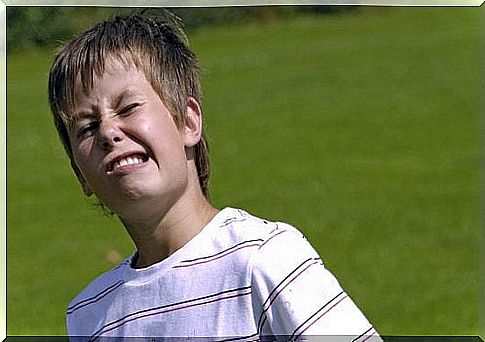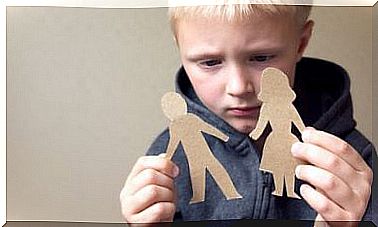Tourette’s Syndrome: Rare Disease?

Tourette’s syndrome (Gilles de la Tourette syndrome) is a neurodevelopmental disorder. It is characterized by multiple motor and vocal tics that appear in childhood. Often these tics are accompanied by changes in behavior.
This syndrome was first described in 1885 by the French physician Georges Gilles de la Tourette. For a long time it was considered a rare disease. Subsequently, it has been shown that only between 0.3% and 1% of school-aged people meet the diagnostic criteria for Tourette’s syndrome .
What is Tourette’s syndrome?
The main feature of this disease is the chronic presence from childhood of at least two motor tics and one vocal tic. But … what do we mean by “tic”?
Tics are involuntary and repetitive gestures, or movements, that occur following the contraction of one or more muscles of the body, usually of the face. These are convulsive, inappropriate and excessive movements. By distracting yourself or straining it is possible to decrease such movements.

Tourette’s syndrome affects all races and ethnicities, both children and adults, although it usually occurs from the age of 6. It is four times more common in men than in women .
The tics in Tourette’s syndrome
As we have said, two types of tics occur in Tourette ‘s syndrome: motor and vocal. Motor tics usually precede vocal tics. Furthermore, the onset of simple tics often precedes that of complex tics.
Examples of simple tics are blinking, facial grimacing, shoulder twitching, neck stretching and abdominal contractions. Vocal tics consist of sniffling, grunting, and throat clearing.
Both simple and complex tics are preceded by a growing sensation of tension. This tension is temporarily relieved by the manifestation of tics. These tense sensations, known as “warning impulses”, are characteristic of tics and allow us to distinguish Tourette’s syndrome from other hyperkinetic movement disorders.
Patients present with tics of varying intensity. They may experience mild symptoms, which often go unnoticed, or make loud, energetic noises to the point of injury.
Diagnosing Tourette’s Syndrome
The diagnosis of this pathology is related to the observation of the patient and his clinical history. The diagnostic criteria for Tourette ‘s syndrome are as follows:
- At least two motor and one vocal tics (not necessarily simultaneous).
- Presence of tics for at least 12 months.
- Starting age prior to 18 years.
- Tics are not caused by the physiological effects of substances (for example, exciters) or by other diseases (for example, Huntington’s disease).
It is not uncommon for patients to be officially diagnosed with Tourette’s only after presenting with symptoms for a long time. This is due to several reasons.
First of all, for relatives and doctors who are not familiar with Tourette’s syndrome, symptoms such as mild and even moderate tics can be considered irrelevant. They can also be recognized as part of a growth phase or as a result of another medical condition.
For example, some parents may think that blinking is related to vision problems or that sniffing is due to seasonal allergies. Some patients self-diagnose after they themselves or their parents, relatives or friends read or hear about Tourette’s syndrome.

What are the causes of Tourette’s syndrome?
Little is known about the brain mechanisms associated with tics. Preliminary evidence from neurochemical and neuroimaging research suggests a dysfunction of the dopaminergic pathways at the striatum (and cortical) level, with an alteration in the areas responsible for the cortico-striatum-thalamus-cortical circuits.
Neurological studies on Tourette’s syndrome have also provided evidence of deficiencies in brain maturation. In this sense, it was found that neurons of the striatum migrate to other areas. Likewise, genetic predisposition is important for the onset of the syndrome. It is a genetically heterogeneous disorder.
On the other hand, data from epidemiological and laboratory studies have drawn attention to the importance of environmental factors . These factors refer to autoimmune infections and diseases, as well as prenatal and perinatal problems.
Tourette’s syndrome in the cinema
Tourette’s syndrome has been proposed on the big and small screen. There are not a few films that have brought this disease to the scene and transformed it into a leitmotiv.
In The Genius of the Fraud , 2003, the character played by Nicolas Cage suffers from this syndrome. The film tells the story of two cheap thieves who sell water filter devices.
The protagonist of the film Dirty Filthy Love , 2004, played by Michael Sheen, also suffers from this disease. The plot tells the life of a man who falls apart due to his obsessive-compulsive disorder and Tourette’s syndrome.
The film My faithful companion , 2008, also talks about this syndrome. The protagonist is a teacher who cannot find work due to his illness.
Because tics don’t always generate disabilities, most people with Tourette’s syndrome don’t need treatment. However, some medications are effective for people whose symptoms interfere with the proper performance of normal daily activities.









